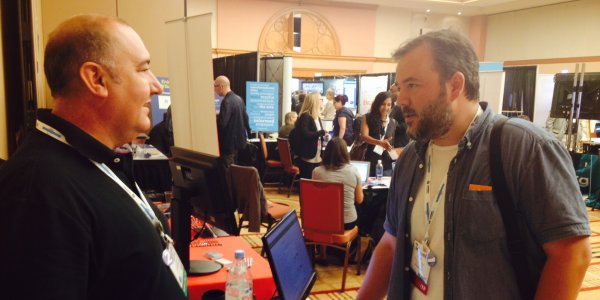The future of the American newsroom is wide open

Two weeks ago I was in Chicago for ONA14, talking to North American journalists about Citizen Desk, our social media verification tool. Among them were a couple developers who work at one of the biggest names in the U.S. news business. These guys want to use open source tools in their newsroom but, for now, their corporate task masters currently won’t allow it.
ONA14 showed me that understanding of open source — and its use — is thriving in North America. The tipping point is coming when open source becomes the rule for journalism software, not the exception.
I was gratified that so many people at ONA14 were interested in Sourcefabric. Our big story this year was how Citizen Desk helps newsrooms verify eyewitness media, but I found that people were interested in all our software — from our Newscoop CMS to our Airtime radio automation software to our Booktype authoring and publishing software. I also learned about a lot of other exciting projects.
These are a few of my favorite things
One project at ONA14 that completely blew my mind was Expunge.io, a tool that helps young people clear the juvenile criminal records that prevent them from finding good jobs and moving forward in life. It’s a perfect example of how motivated individuals can use technology to take control of their lives and improve their world. While it isn’t a textbook example of what we’d consider traditional journalism, it is an update on an important function all news organizations provide — to advocate and campaign in service of their communities.
ONA14 is a magnet for great ideas. I had a short talk with Hacks/Hackers co-founder Jennifer 8. Lee about NewsDiffs, an open source project she helped create to monitor and archive changes in articles after publication. (In the Unix/Linux world, diff is a utility to track the numerous changes made to software code over time.) NewsDiffs does the same thing, but tracks how articles are changed. It’s fun, simple and useful. Check it out.
Props also to SAMDesk and Chartbeat, both of whom are doing some great, innovative work with top-tier clients. SAMDesk (the SAM stands for Social Asset Management) is a tool for managing the workflow in social media-powered newsrooms, and while it’s in the same space as our Citizen Desk, I particularly like their visual approach to curation and discovery of interesting social media content. Chartbeat is a system for tracking reader metrics that provides a lot more detail to publishers than you can get from the excellent Google Analytics.
To get a feel for the kind ideas at the ONA14 Midway, check out the ONA 2014 Student Newsroom video below on media innovators (including the two dorks at 01:57) at this year’s event.
It was also great to catch up again with Steve Buttry, a go-to guy if you want to take the pulse of the U.S. news business; Storyful executive editor David Clinch; Sam Dubberley and Claire Wardle of the Tow Center for Digital Journalism; Burt Herman, co-founder of Storify and Hacks/Hackers; Miguel Paz, founder and CEO of Poderopedia; and Craig Silverman, founder of Emergent.info and editor of the Verification Handbook.
I want to thank journalism instructors and academic advisors like James Foust, Rubina Gulati, Doug Haddix and Sarah Smith-Frigerio who are working hard to prepare the next generation of journalists.
But the best part of ONA14 was really talking to journalists about what their newsrooms need to report better and thrive. Thanks to Alessandro Cappai, Kiratiana Freelon, Will Healey, Mark Hinojosa, Miyuki Inoue, Kala Kachmar, Susan Smith Richardson, Dan Scapusio and many more for sharing their time with us and giving us important feedback. These conversations will continue, and we’re looking forward to it.
ONA15 will take place September 24-26 in Los Angeles. We’ll see you there.
